December 7th, 2011
 GE and their venture partners have established a $100M open innovation challenge aimed at ideas to improve the diagnostics and early detection of breast cancer. Phase One of the competition is closed but you can still submit ideas for review and possible venture investment.
GE and their venture partners have established a $100M open innovation challenge aimed at ideas to improve the diagnostics and early detection of breast cancer. Phase One of the competition is closed but you can still submit ideas for review and possible venture investment.
While the ideas in the first round are scientific and engineering in nature, there is plenty of room for innovative approaches to process, behavior change, decision support and other cognitive aspects involved in the diagnostics, early detection and personalized treatment of breast cancer. I will be watching for new sub-challenges that are cognitive design related.
In the meantime, I would like to hear from readers that are interested in forming a team to work on future rounds of this innovation challenge.

Posted in Events | No Comments »
December 4th, 2011
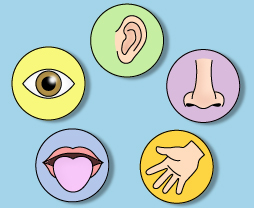 Experience is primarily driven by what we see and hear. Of course, the other senses – smell, touch and taste play a role but for the most part it is minor. This creates an innovation opportunity:
Experience is primarily driven by what we see and hear. Of course, the other senses – smell, touch and taste play a role but for the most part it is minor. This creates an innovation opportunity:
How to engage the sense of smell, touch and taste in experiences that otherwise lack them as a defining feature.
For example, we can enhance learning, gaming, shopping and night clubbing experiences by engineering the proper odors. A recent article in Chemosensory Perception, Can Ambient Scent Enhance the Nightlife? found:
“The three scents tested were orange, seawater, and peppermint. These scents were shown to enhance dancing activity and to improve the evaluation of the evening, the evaluation of the music, and the mood of the visitors over no added scent. However, no significant differences were found between the three scents”
Scents are powerful. Olfaction is part of the brain’s Limbic system which supports long-term memory, emotion and behavior.
Odors elicit associations, emotions, moods and mental stimulation. They help form rich memories and can support savoring or other complex psychological states. While we spend a lot of time and attention on eliminating unpleasant odors, the opportunities to enhance experiences by adding engineered odors has just started.
Interested to hear from readers that have examples of how to use odor to enhance experience.

Posted in Service Innovation | No Comments »
December 1st, 2011
 A start-up called GreenGoose! is getting ready to release a toolkit for developing applications that remake the psychology of everyday events. The toolkit includes sensor stickers and a small base receiver that connects to your wireless router. Here is how it works:
A start-up called GreenGoose! is getting ready to release a toolkit for developing applications that remake the psychology of everyday events. The toolkit includes sensor stickers and a small base receiver that connects to your wireless router. Here is how it works:
“The sensors are wireless and have a battery inside which lasts a year. Each one measures a different thing you do, but they all communicate with the same egg-sized base-station. Just stick to items like pet food scoops, frisbees, and water bottles.”
The data that is captured can be used to drive a game, health application, social interaction or other means of creating mental energy and well being.
The system promises to be low-cost, robust and easy to use. They are looking for developers. While some programming will be involved the real challenge is in the cognitive design.
How can data about everyday activities be used to create fun, meaning or other positive mental states?
They have an app coming out focused on your pets.

Interested to hear from readers that have ideas for the home, workplace and community (e.g. while shopping or walking through the woods) applications.

Posted in Design | No Comments »
November 28th, 2011
In cognitive design we can frame business ethics as a behavior change challenge. This means identifying target behaviors to stop, start and avoid starting and then designing changes to the environment that encourage or require the behaviors as well as one or more pathways to learn them from experience.
More specifically, some behaviors and decisions are ethical and others are not. The challenge in many organizations is to have employees either stop or avoid starting unethical behaviors and start ethical ones.
Taking a cognitive design approach means we study actual business behaviors and the deeply felt psychological needs that drive them. Only by understanding the underlying psychology can we hope to design an effective program to change unethical behavior or promote ethical ones.
 This approach is gaining academic traction in the rapidly emerging field of behavioral business ethics. According to a new book just edited by two leaders in the field:
This approach is gaining academic traction in the rapidly emerging field of behavioral business ethics. According to a new book just edited by two leaders in the field:
“This book takes a look at how and why individuals display unethical behavior. It emphasizes the actual behavior of individuals rather than the specific business practices. It draws from work on psychology which is the scientific study of human behavior and thought processes. As Max Bazerman said, “efforts to improve ethical decision making are better aimed at understanding our psychological tendencies.”
For a shorter introduction to what behavioral science can do for the practice of business ethics check out this inaugural address given at the Rotterdam School of Management. Cognitive designers will be most interested in the discussion on the emergence of distrust.
The cognitive-behavioral approach promises to reframe our approach to business ethics in a way that leads to dramatic improvements. We might make more progress treating ethics problems like we do eating or smoking problems. After all, assuming people are greedy and corrupt leads nowhere. Perhaps the key is to understand why they cannot control their impulses in a particular environment and how deeply felt psychological needs can be met in a more ethical manner.

Posted in Behavior Change, Books, Related Fields | No Comments »
November 24th, 2011
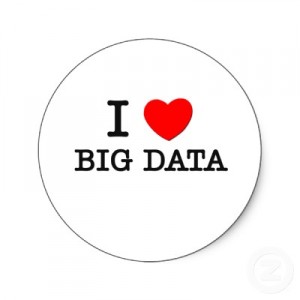 Big data involves using super-sized data sets to create value in new ways. According to a recent report by the McKinsey Institute it is The Next Frontier for Innovation, Competition and Productivity.
Big data involves using super-sized data sets to create value in new ways. According to a recent report by the McKinsey Institute it is The Next Frontier for Innovation, Competition and Productivity.
“Data have swept into every industry and business function and are now an important factor of production, alongside labor and capital. We estimate that, by 2009, nearly all sectors in the US economy had at least an average of 200 terabytes of stored data (twice the size of US retailer Wal-Mart’s data warehouse in 1999) per company with more than 1,000 employees. “
How can a ton of data drive innovation, productivity and competitive advantage? According to the report it can be used to:
- Create transparency in operations, service, price and quality.
- Enable experiments to discover needs, root causes, variability and improve performance.
- Understand populations of customers and employees to offer customized offerings and interventions.
- Develop algorithms to support, improve or replace human decision-making.
- Create new business models, products and services by leveraging data about use to refine them, building information components into them and selling data.
In each of these strategies cognitive design plays an important role. Cognitive design focuses on the experiential component of big data applications to insure they authentically move hearts, extend minds or otherwise create value through positive psychological impact.
The report highlights that one of the major challenges of big data is having enough managerial and technical talent to do the work. They predict a shortage of some 1.5M big data savvy workers by 2018. Fortunately, leading universities such as Northwestern are offering new programs in Predictive Analytics and Analytics to help meet the demand for big data professionals.

Posted in Related Fields | No Comments »
November 22nd, 2011
 While we constantly call for new ideas and creative approaches to persistent problems we dislike the uncertainty. We dislike the uncertainty we feel about our ability to come up with a creative idea (especially in a group) and we dislike the uncertainty associated with trying to act on a creative idea. According to new research reported in Association for Psychological Science, this uncertainty may be so strong it signals a hidden bias against creativity.
While we constantly call for new ideas and creative approaches to persistent problems we dislike the uncertainty. We dislike the uncertainty we feel about our ability to come up with a creative idea (especially in a group) and we dislike the uncertainty associated with trying to act on a creative idea. According to new research reported in Association for Psychological Science, this uncertainty may be so strong it signals a hidden bias against creativity.
I have seen this bias in action for many years. From a cognitive design standpoint, we need to ask if there are better ways for organizations to manage the psychology of creativity as it relates to uncertainty. How can we maintain expansive thinking and action even in the face of risk? Trying to artificially reduce uncertainty by saying such things as “we tolerate failure” does not appear to address the need.

Posted in Cognitive Bias, Psychographics, Service Innovation | 2 Comments »
November 18th, 2011
 A well-known self control technique involves the use of reason to combat temptation. For example, if you are trying to control your eating behaviors and someone offers you a piece of cake you can remind yourself that you don’t really need the cake, eating the cake will make you feel bad later or any number of ways of using reason to maintain control. But does this work?
A well-known self control technique involves the use of reason to combat temptation. For example, if you are trying to control your eating behaviors and someone offers you a piece of cake you can remind yourself that you don’t really need the cake, eating the cake will make you feel bad later or any number of ways of using reason to maintain control. But does this work?
Recent research from Northwestern University suggests that using cognition to control behavior works best when you are not in the related visceral state. Visceral states are biological drive states and include for example, hunger, thirst, sexual desire and fatigue. In the cake example, using reason to avoid it will work best when I am not hungry.
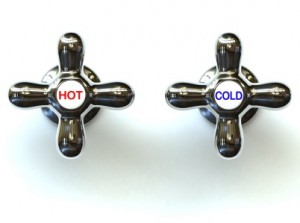 Visceral states tend to trump psychological states. When we are in the grip of a craving we are aroused and in a “hot” cognitive state. Our attempt to use reason can be corrupted into a rationalization for indulging. On the other hand, when satiated or satisfied we are in a “cool” cognitive state and reason helps to control behavior.
Visceral states tend to trump psychological states. When we are in the grip of a craving we are aroused and in a “hot” cognitive state. Our attempt to use reason can be corrupted into a rationalization for indulging. On the other hand, when satiated or satisfied we are in a “cool” cognitive state and reason helps to control behavior.
Bottom line for cognitive designers working on behavior change is that reason-based strategies are useful but not sufficient for maintaining self control. You will need to design biology-based strategies to maintain control in the presence of hot cognitive states.

Posted in Behavior Change | No Comments »
November 15th, 2011
 People don’t use logic, utility theory or other forms of rational inference when making decisions about money, careers, relationships, purchases or other important matters. Instead we rely on emotions, behavioral impulses and a small army of short-cuts known as cognitive biases that work very well in some circumstances and terribly in others. At least that is the story behind the modern view of mind and one that cognitive design has deeply embraced. But it leaves something important out, namely there will be a subset of decision-makers that do in fact make decisions rationally. At least that is the finding from a recent research study, Cognitive Control and Individual Differences in Economic Ultimatum Decision-Making reported on PLOS One. The researchers:
People don’t use logic, utility theory or other forms of rational inference when making decisions about money, careers, relationships, purchases or other important matters. Instead we rely on emotions, behavioral impulses and a small army of short-cuts known as cognitive biases that work very well in some circumstances and terribly in others. At least that is the story behind the modern view of mind and one that cognitive design has deeply embraced. But it leaves something important out, namely there will be a subset of decision-makers that do in fact make decisions rationally. At least that is the finding from a recent research study, Cognitive Control and Individual Differences in Economic Ultimatum Decision-Making reported on PLOS One. The researchers:
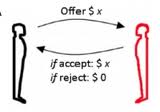 “…tested subjects’ behavior in the Ultimatum Game, in which two players have to split a sum of money. One player makes an offer, and the other must accept or refuse the offer. If it is declined, neither receives any money. The rational choice, and the scenario predicted by most economic models, would be for the first player to offer only a small amount to the second player, and for the second player to accept this offer, since something is better than nothing. However, most people do not behave this way. The first player often offers an even split, and the second player often rejects an offer of an uneven split, likely due to strong emotional motives.”
“…tested subjects’ behavior in the Ultimatum Game, in which two players have to split a sum of money. One player makes an offer, and the other must accept or refuse the offer. If it is declined, neither receives any money. The rational choice, and the scenario predicted by most economic models, would be for the first player to offer only a small amount to the second player, and for the second player to accept this offer, since something is better than nothing. However, most people do not behave this way. The first player often offers an even split, and the second player often rejects an offer of an uneven split, likely due to strong emotional motives.”
There are however a number of people that do follow the rational model of offering and accepting a amount much less than half. After all, it is the rational thing to do! The group is small and includes individuals with high cognitive control or the ability to resist impulsive tendencies.
While it is not clear how far this will generalize, it offers an important reminder to cognitive designers. In our rush to leverage and mitigate cognitive biases be sure not to exclude those operating with logic and high cognitive control. The research is also interesting because it presents a way to use a simple task and brain scan to identify high cognitive control.

Posted in Behavioral Finance, Cognitive Bias, Psychographics | No Comments »
November 11th, 2011
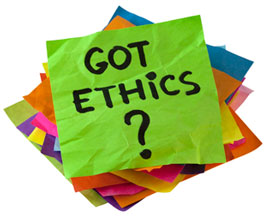 Improving employee productivity, reducing obesity, addressing global warming, getting customers to purchase your product and a host of other socially and economically pressing issues all mean changing the behaviors of other people. Our urgent need but frequent inability to achieve lasting behavior change is becoming a national past time.
Improving employee productivity, reducing obesity, addressing global warming, getting customers to purchase your product and a host of other socially and economically pressing issues all mean changing the behaviors of other people. Our urgent need but frequent inability to achieve lasting behavior change is becoming a national past time.
In our rush to change behaviors (at all costs?) we need to be mindful of the ethics involved. A recent blog post on the New Scientist, Nudge Policies are Another Name for Coercion, makes this point well. Nudges are small changes to our environment that trigger a built in cognitive bias to produce significant behavior change. For example, the status quo bias will keep us enrolled in a 401k plan that we have to opt out of instead of opting into. Or food placement, lighting and length of lines can strongly determine what children “decide” to have for lunch at school. The idea is to play off our automatic patterns of thought to nudge us towards a particular behavior or decision rather than forcing us along a single path.
 Leaders, policy makers or innovators that deploy nudges do so under the assumption of paternalism. It is an ethically OK influence strategy because the change has the person’s best interests at heart. Everybody wants to save more and eat healthier, right? One alternative to a nudge or playing off my automatic tendencies is to sit me down, explain the facts and let me consciously make the decision. Some worry that this so-called democratic approach to behavior change is nice in principle but does not work well in practice. The post challenges that by citing recent research at Cornell University:
Leaders, policy makers or innovators that deploy nudges do so under the assumption of paternalism. It is an ethically OK influence strategy because the change has the person’s best interests at heart. Everybody wants to save more and eat healthier, right? One alternative to a nudge or playing off my automatic tendencies is to sit me down, explain the facts and let me consciously make the decision. Some worry that this so-called democratic approach to behavior change is nice in principle but does not work well in practice. The post challenges that by citing recent research at Cornell University:
“Mettler uses experiments to show how ordinary people can understand complicated policy questions and reach considered conclusions, as long as they get enough information. This suggests a far stronger role for democratic decision-making than libertarian paternalism allows.”
Positive influence and manipulation often pull on the same underlying techniques. What differentiates them is intent and what all parties have consciously consented to do. Leaders, policy makers and innovators often don’t ask for permission to make change, they assume they know what is best for others and move forward. That’s their job and it is one that is steeped in the ethics of behavior change.
Interested to hear from readers that have tried to distill or codify the ethics of behaviors change. Under what conditions is it morally appropriate to influence behavior change? Likewise, under what conditions are your morally compelled to try and influence behavior change (e.g. a doctor changing a patient’s health-related behaviors)?

Posted in Behavior Change | 5 Comments »
November 8th, 2011
 Forbes ran an interesting article about AT&T’s plans to sell a line of clothing that will automatically record heart rate, body temperature and other vitals and beam the data to a secure web site. AT&T like other wireless providers wants to leverage their technology and networks to get into personal informatics and e-health.
Forbes ran an interesting article about AT&T’s plans to sell a line of clothing that will automatically record heart rate, body temperature and other vitals and beam the data to a secure web site. AT&T like other wireless providers wants to leverage their technology and networks to get into personal informatics and e-health.
Rather than a wristband or body wrap, the AT&T clothes will include a sensor pack you can remove before washing. This could have mass market appeal and take personal informatics to a much broader audience. The clothes are not on the market yet. There is plenty of time to start cooking up cognitive designs for how to put them to use.
The work is being done by AT&T’s emerging device division. You can partner with them to add wireless capabilities to your products and services.
Interested to hear from readers about how bio-tracking clothes can be used to improve health, play games, share with friends or otherwise create value.

Posted in Service Innovation | No Comments »
 GE and their venture partners have established a $100M open innovation challenge aimed at ideas to improve the diagnostics and early detection of breast cancer. Phase One of the competition is closed but you can still submit ideas for review and possible venture investment.
GE and their venture partners have established a $100M open innovation challenge aimed at ideas to improve the diagnostics and early detection of breast cancer. Phase One of the competition is closed but you can still submit ideas for review and possible venture investment.











